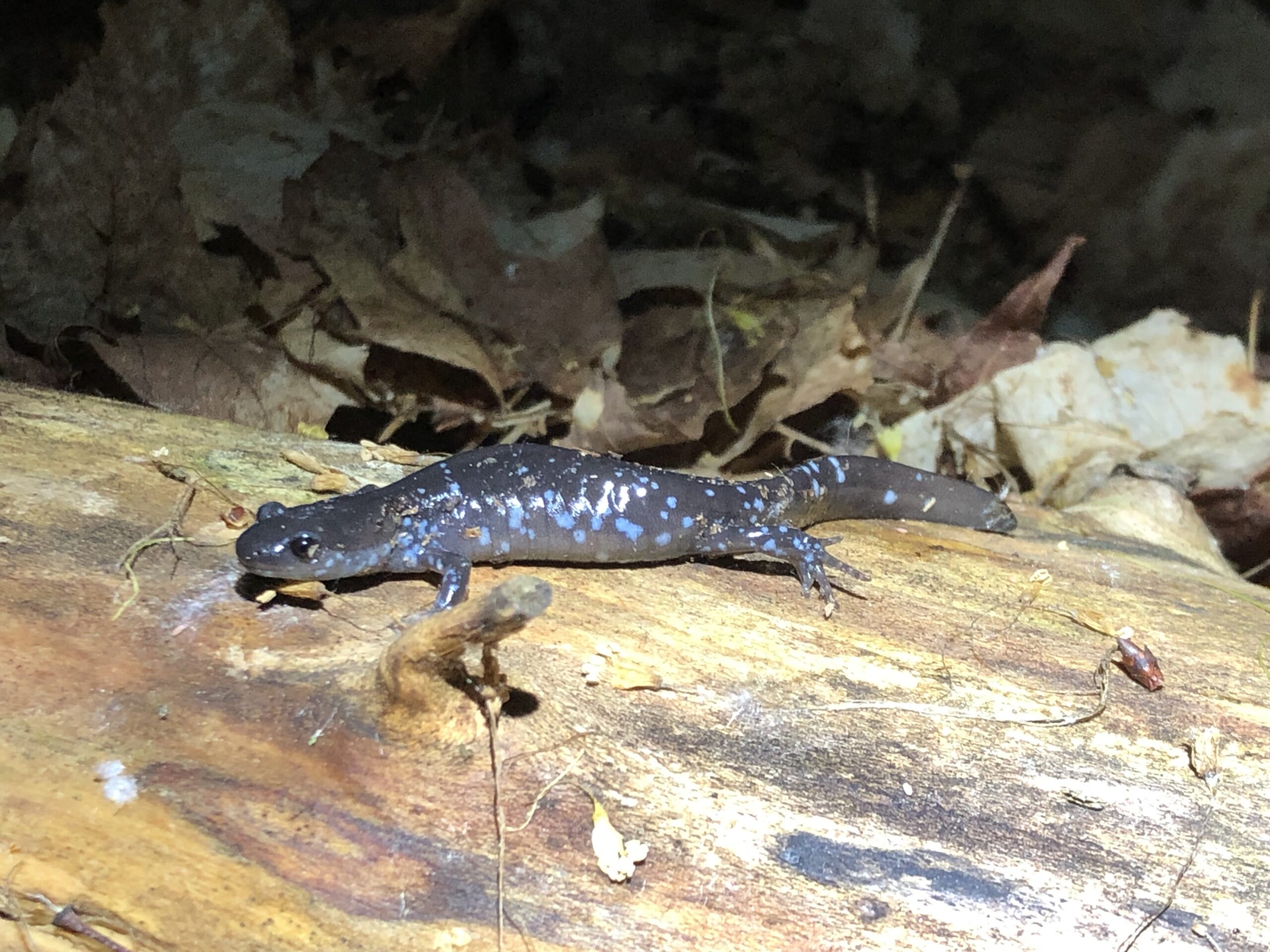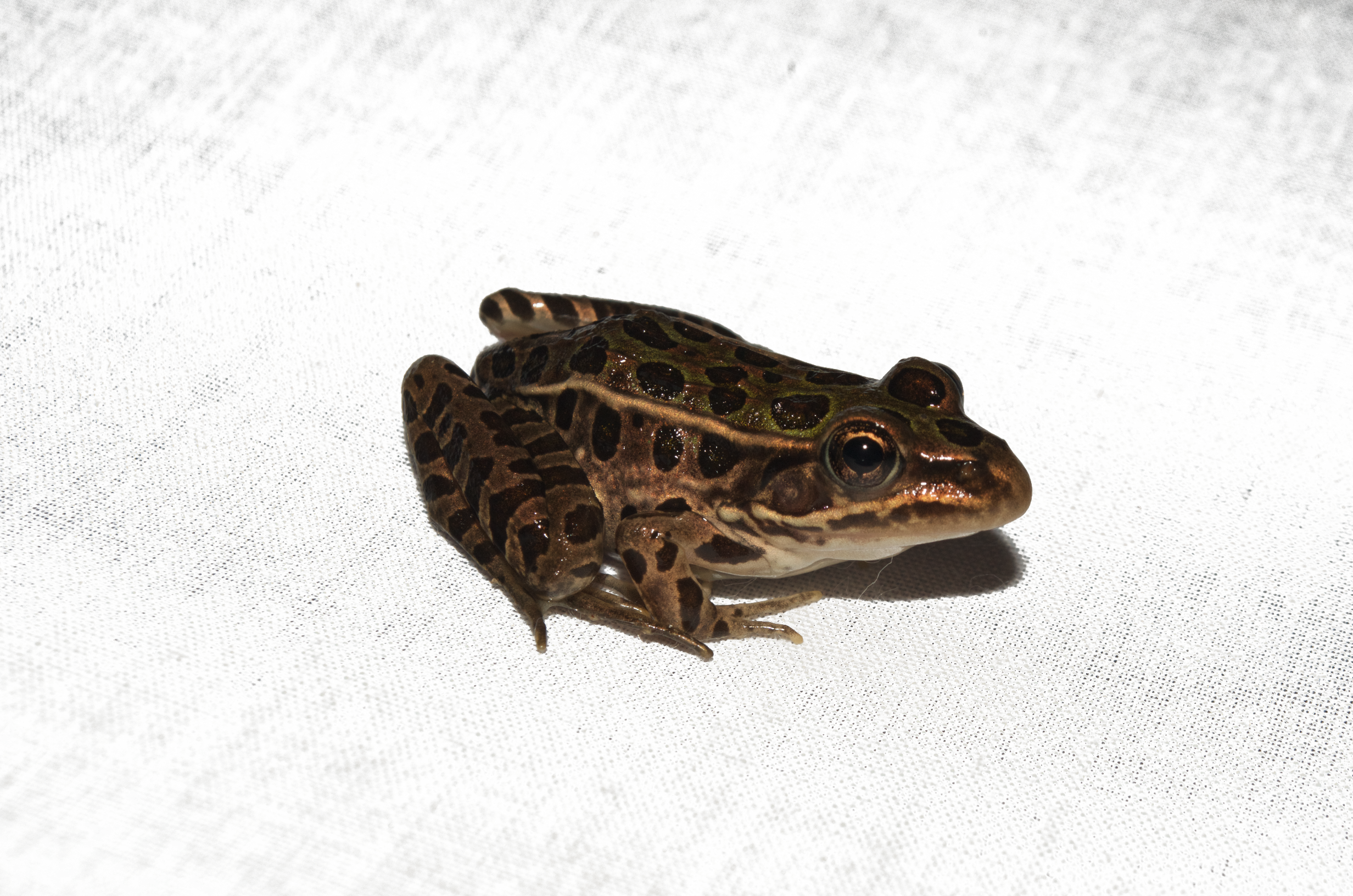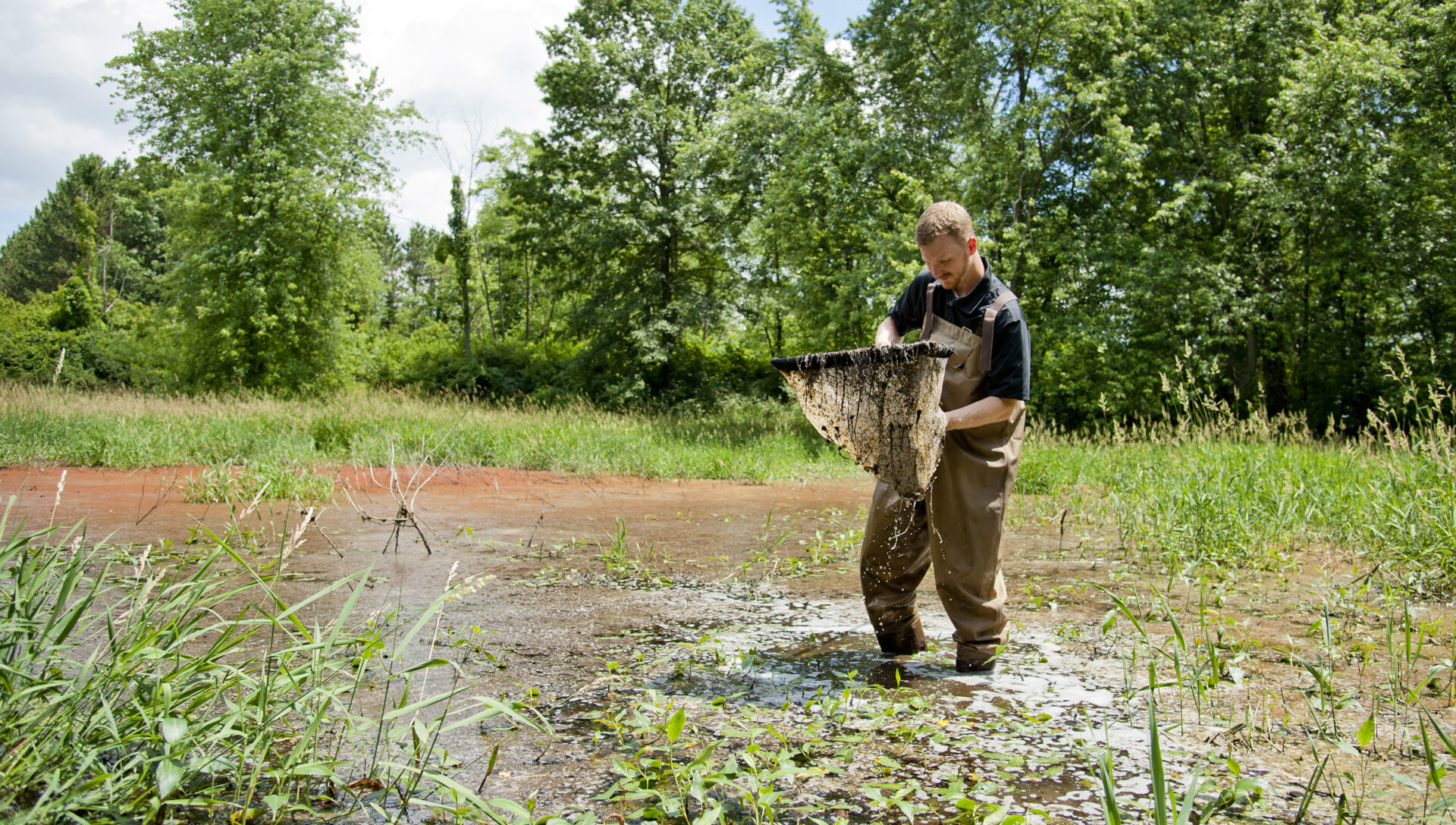SERDP amphibian research
‘Forever chemicals’ and amphibians
Key Findings
- PFAS accumulate rapidly in amphibian larvae (i.e. steady-state levels reached within 48 h)
- Aquatic PFAS exposure can affect larval development, growth, body condition, and susceptibility to infection
- Toxicity of simple PFAS mixtures (i.e. PFOS + PFOA) appears to be mostly additive, but there remains potential for synergistic interactions depending on the biological endpoints and specific PFAS examined
- Combined aquatic and sediment PFAS exposure can negatively affect larval development at concentrations found at PFAS-impacted sites
- Dermal PFAS exposure in terrestrial life stages leads to bioaccumulation and can affect growth
- Dietary PFAS exposure in adult salamanders resulted in biomagnification (PFOS), altered growth, and reduced body condition
Representative publications
Barragan, EM, TD Hoskins, EB Allmon, JL McQuigg, MT Hamilton, E Christian, GSM Coogan, CL Searle, YJ Choi, LS Lee, JT Hoverman, MS Sepúlveda. 2023. Toxicities of Legacy and Current Use PFAS in an Anuran: Do Larval Exposures Influence Responses to a Terrestrial Pathogen Challenge? Environmental Science and Technology. 57:19180-19189.
Hoskins, TD, RW Flynn#, GSM Coogan, AC Catlin, C de Perre, MM Gharehveran, YJ Choi, LS Lee, JT Hoverman, MS Sepúlveda. 2023. Chronic Exposure to a PFAS mixture resembling AFFF-impacted surface water decreases body size in Northern Leopard Frogs (Rana pipiens) Environmental Science and Technology. 57:14797-14806.
Pandelides, Z, J Conder, YJ Choi, EB Allmon, TD Hoskins, LS Lee, JT Hoverman, and MS Sepúlveda. 2023. A critical review amphibian PFAS ecotoxicity research studies: Identification of screening levels in water and other useful resources for site‐specific ecological risk assessments. Environmental Toxicology and Chemistry. 42:2078-2090.
Hopkins, AP and JT Hoverman. 2023 Acute aquatic toxicity of two commonly used fungicides to midwestern amphibian larvae. Ecotoxicology. 32:188-195.
Lech, ME, YJ Choi, LS Lee, MS Sepulveda, JT Hoverman. 2022. Effects of per- and polyfluoroalkyl substance mixtures on the susceptibility of larval American Bullfrogs to parasites. Environmental Science and Technology. 56: 15953-15959.
Hoskins, TD, EB Allmon, RW Flynn, LS Lee, JT Hoverman, and MS Sepulveda. 2022. An environmentally relevant mixture of perfluorooctanesulfonic acid and perfluorohexanesulfonic acid does not conform to additivity in northern leopard frogs exposed through metamorphosis. Environmental Toxicology and Chemistry. 41: 3007-3016.
Flynn, RW, G Hoover, M Iacchetta, S Guffey, Y-J Choi, C De Perre, B Huerta, W Li, JT Hoverman, L Lee, MS Sepulveda. 2022. Comparative toxicity of aquatic PFAS exposure in three species of amphibians. Environmental Toxicology and Chemistry. 41:1407-1415.
Tornabene, BJ, MF Chislock, ME Gannon, MS Sepúlveda, and JT Hoverman 2021. Relative acute toxicity of three per- and polyfluoroalkyl substances on nine species of larval amphibians. Integrated Environmental Assessment and Management. 17:684-690.
Flynn, RW, TD. Hoskins, M Iacchetta, C de Perre, LS Lee, JT Hoverman, and MS Sepulveda. 2021. Dietary exposure and accumulation of per- and polyfluoroalkyl substances alters growth and reduces body condition of post-metamorphic salamanders. Science of the Total Environment 765:142730.
Abercrombie, SA, M Iachetta, C de Perre, RW Flyn#, MS Sepúlveda, LS Lee, and JT Hoverman. 2021. Sublethal effects of dermal exposure to poly- and perfluoroalkyl substances on post-metamorphic amphibians. Environmental Toxicology and Chemistry. 40:717-726.
Brown, SR, RW Flynn, and JT Hoverman. 2021. Perfluoroalkyl substances increase susceptibility of northern leopard frog tadpoles to trematode infection. Environmental Toxicology and Chemistry. 40:689-694.
Flynn, RW, M Iachetta, C de Perre, LS Lee, MS Sepúlveda, and JT Hoverman. 2021. Chronic per-/polyfluoroalkyl substance exposure under environmentally relevant conditions delays development in northern leopard frog (Rana pipiens) larvae. Environmental Toxicology and Chemistry. 40:711-716. Recognized as top 10 exceptional papers of 2021 by the journal.
Abercrombie, SA, M Iachetta, C de Perre, RW Flynn, MS Sepúlveda, LS Lee, and JT Hoverman. 2020. Sublethal effects of dermal exposure to poly- and perfluoroalkyl substances on post-metamorphic amphibians. Environmental Toxicology and Chemistry.
Flynn, RW, M Iachetta, C de Perre, LS Lee, MS Sepúlveda, and JT Hoverman. 2020. Chronic exposure to PFAS-spiked sediment delays development in Northern leopard frog (Rana pipiens) larvae. Environmental Toxicology and Chemistry.
Brown, SR, Flynn, and JT Hoverman. 2020. Perfluoroalkyl substances increase susceptibility of northern leopard frog tadpoles to trematode infection. Environmental Toxicology and Chemistry.
Foguth, RM, TD. Hoskin, GC Clark, M Nelson, RW Flynn, C de Perre, JT Hoverman, LS Lee, MS Sepúlveda, and JR Cannon. 2020. Single and mixture per- and polyfluoroalkyl substances accumulate in developing Northern leopard frog brains and produce complex neurotransmission alterations, Neurotoxicology and Teratology.
Flynn, RW, MF Chislock, ME Gannon, S. Bauer, BJ Tornabene, JT Hoverman, and MS Sepúlveda. 2019. Lethal and sublethal effects of perfluoroalkyl substance mixtures on larval American bullfrogs (Rana catesbeiana). Chemosphere. 236:124350
Abercrombie, SA, C de Perre, YJ Choi, BJ Tornabene, MS Sepúlveda, LS Lee, and JT Hoverman. 2019. Larval amphibians rapidly bioaccumulate poly- and perfluoroalkyl substances. Ecotoxicology and Environmental Safety. 178:137-145.




